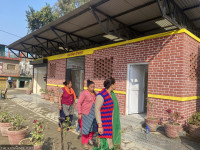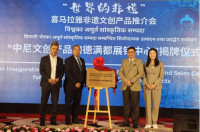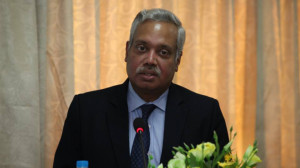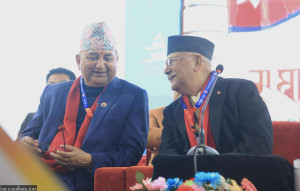National
Nepal adds six new 8000ers, raising its official tally to 14
The Department of Tourism has revised its peak profile, pending global recognition.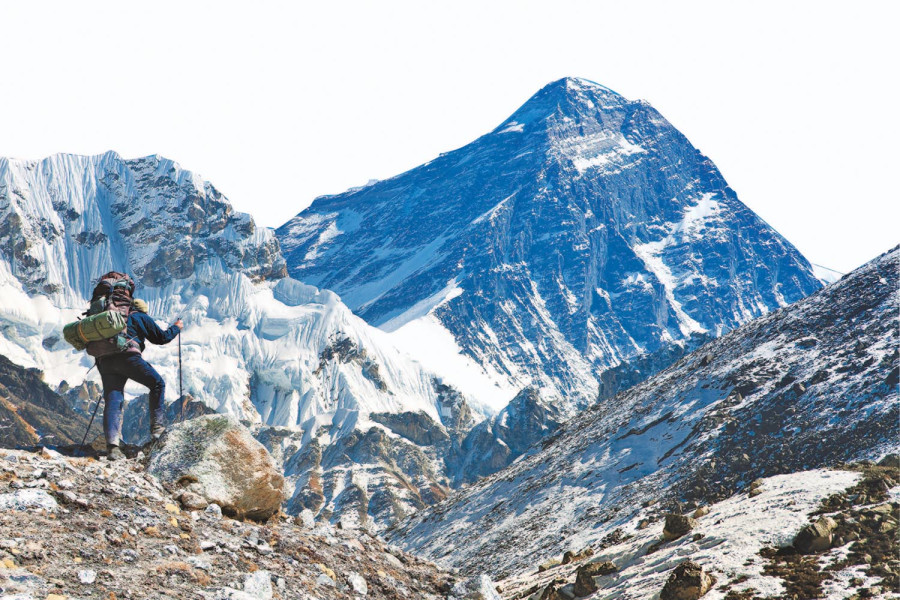
Sangam Prasain
How many mountains towering above 8,000 metres does Nepal have? Official records once listed eight, but that figure has now grown.
The Nepal government has updated its peak profile, officially recognising 14 mountains surpassing 8,000 metres.
Experts emphasise, however, that the International Mountaineering and Climbing Federation (UIAA), the body recognised by the International Olympic Committee, must approve the new list for global recognition.
The Department of Tourism recently published the revised peak profile on its website, adding six new eight-thousanders to Nepal’s official count.
Four of the newly recognised mountains—Yalung Khang (8,505 metres), Yalung Khang West (8,077 metres), Kanchenjunga Central (8,473 metres), and Kanchanjunga South (8,476 metres)—fall on the Kanchenjunga range.
Two peaks from the Lhotse range—Lhotse Middle (8,410 metres) and Lhotse Shar (8,400 metres)—have been added as well.
The list of globally recognised eight-thousanders in Nepal includes Everest (8,848.86 metres), Kanchenjunga (8,586 metres), Lhotse (8,516 metres), Makalu (8,463 metres), Cho Oyu (8,201 metres), Dhaulagiri (8,167 metres), Manaslu (8,163 metres), and Annapurna I (8,091 metres).
Additionally, there are eight-thousanders in Pakistan—K2 (8,611 metres), Nanga Parbat (8,125 metres), Gasherbrum I (8,080 metres), Broad Peak (8,051 metres), and Gasherbrum II (8,034 metres)—while one in China’s Shishapangma stands at 8,027 metres.
Thakur Raj Pandey, senior vice president of the Nepal Mountaineering Association (NMA), said the government has been preparing documentation to present these newly identified peaks on international platforms.
"In Nepal, the government has endorsed these new peaks, which are now listed on the website," he said.
"Once the Cabinet approves the updated list, it will be easier for us to lobby in international forums."
While the Cabinet has yet to approve the new list of eight-thousanders, the Department of Tourism, the government body responsible for mountaineering affairs, has made the list public.
Narayan Prasad Regmi, director general of the Department of Tourism, said the list has been made public as a preliminary claim.
“Our next step is to propose the updated list to the UIAA for official recognition,” he said.
According to Regmi, the department will verify the Geographic Information System (GIS) data and other essential details before making a formal submission.
The documentation of these new peaks has been ongoing for over a decade.
In November 2013, a 10-member committee led by Purna Chandra Bhattarai, then joint secretary at the Tourism Ministry, submitted a 113-page report recommending the inclusion of these six new peaks.
Subsequently, on January 1, 2014, the peak profile preparation committee, chaired by the chief of the Department of Tourism, formed a sub-committee to conclude the task.
The subcommittee, led by Ang Tshering Sherpa, the past president of NMA, included members from the tourism ministry, survey department, Nepal Army, Armed Police Force, and Nepal Police, as well as experts and professionals.
The subcommittee was reconstituted on May 10, 2018.
It also formed a technical working group chaired by Buddhi Narayan Shrestha, a border expert and former director general of the Survey Department.
The technical working group worked on GIS data, amenities around the mountains, and other essential information related to each mountain.
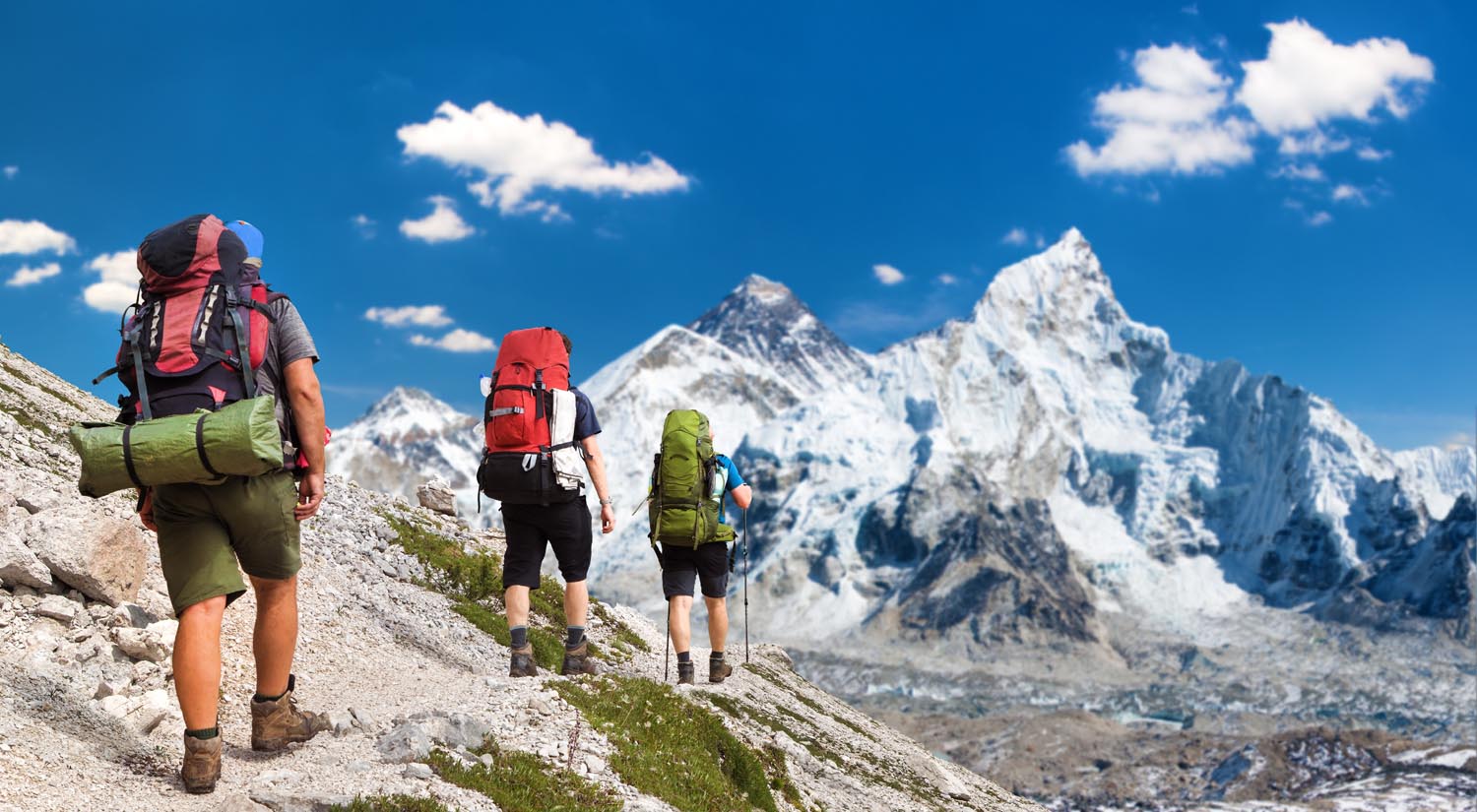
Last February, Shrestha, the boundary expert, told the Post, “It’s a proven fact that we have 14 mountains above 8,000 metres. Various studies have confirmed it.
“We have also produced a map showing these mountains, but the Nepal government hesitates to proclaim them. As a researcher, I have studied these mountains. The government needs to speak. We have 14 peaks standing over 8,000 metres."
There has been controversy over whether multiple peaks within the same mountain range should be classified as separate mountains.
But according to Sherpa, the former president of NMA and the head of the subcommittee, a mountain is typically considered a separate peak if the col distance between two peaks, the lowest point on the ridge, is at least 500 metres, and if the peak has a separate route not shared with any other peak.
Nepal has been lobbying for international recognition of these six other peaks for over a decade.
A decade ago, the UIAA initiated the Agura Project to identify and recognise peaks above 8,000 metres.
In 2013, the project picked five peaks in Nepal for official recognition as eight-thousanders. Another peak was added later.
Representatives of the UIAA recommended the peaks during a three-day meeting of the UIAA management committee in Italy from May 2 to 4, 2013.
The proposal was scheduled to be presented at the UIAA general assembly in October 2013 in Switzerland, but it was held back due to some technical reasons.
Then, in 2014, there was a deadly avalanche on Everest, followed by the 2015 earthquake, and the issue fell by the wayside.
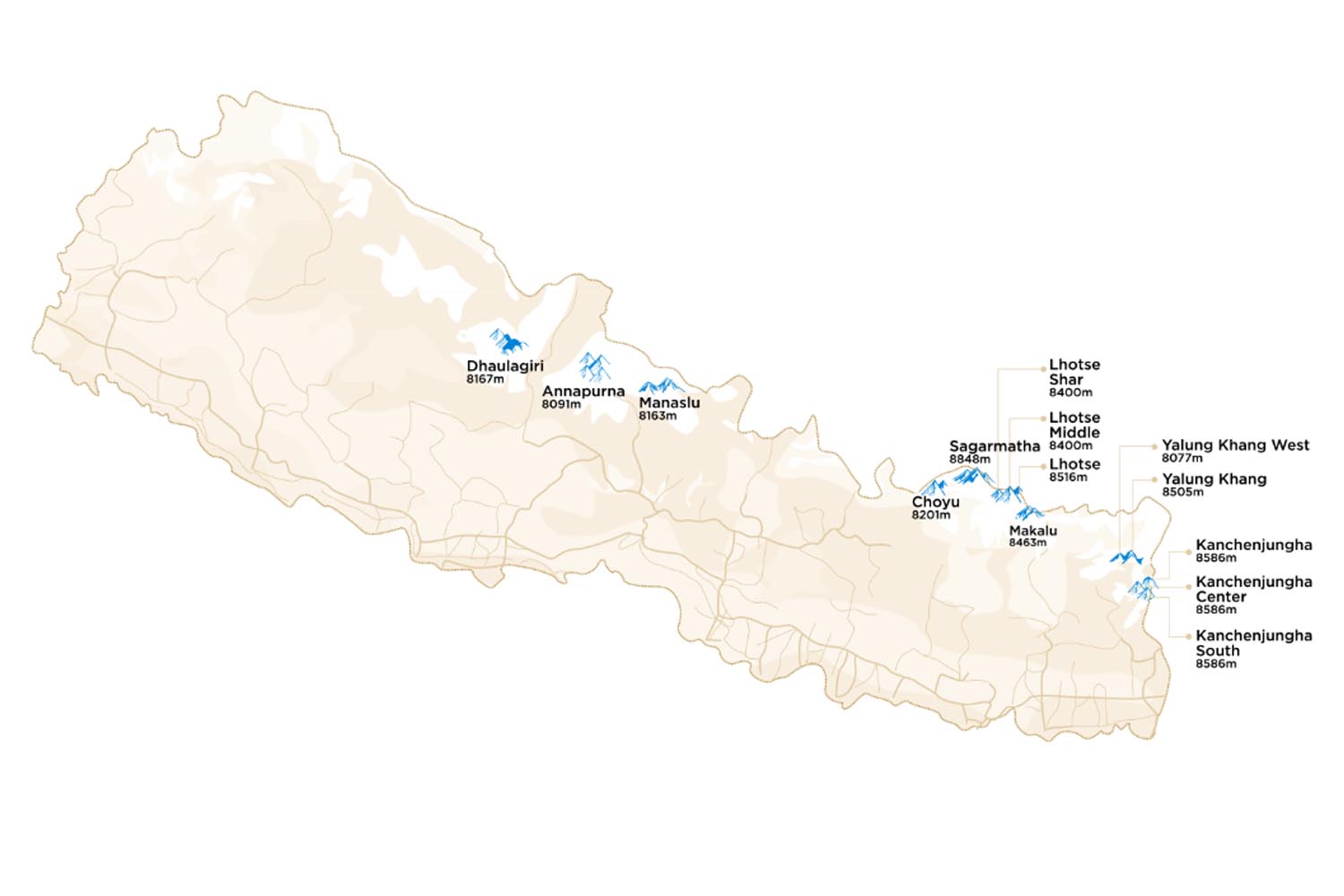
“We meet yearly with the UIAA representatives, which is the periodic meeting. Based on the UIAA suggestions, we must make strong documentation to authenticate the new peaks. We are waiting for the government's response,” said Pandey.
Adding these peaks to the eight-thousander club is not just a matter of national pride—it has significant implications for Nepal’s mountaineering industry.
If internationally recognised, Nepal could see increased tourism revenue, as climbers looking to set records or achieve new feats would seek permits for these additional peaks.
The growing number of climbers in Nepal each year underscores the importance of this industry.
In 2023 alone, the government issued over 2,500 climbing permits, generating Rs850 million in revenue.
If the six additional eight thousanders gain international status, they could attract new climbers seeking challenges beyond the traditionally recognised peaks.
A study on mountaineering conducted by the government and the Nepal Mountaineering Association shows that Nepal has 3,310 peaks (including walking and climbing peaks above 5,500m). Of these, 1,913 require mountaineering gear.
Nepal has thus far opened 468 peaks for commercial expeditions.




 12.12°C Kathmandu
12.12°C Kathmandu
